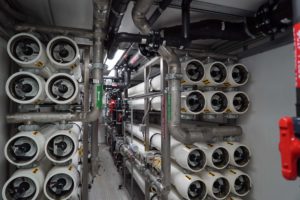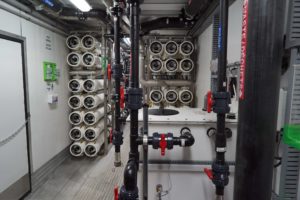Home »
mobile reverse osmosis
View Full Spec Sheet MPW’s Multi-Pass 600 Reverse Osmosis (RO) System provides a convenient production solution for removing dissolved solids, total organic carbon (TOC) and other colloidal contaminants. The system is operable in either single- or double-pass mode, with nominal flow rates up to 600 GPM and 300 GPM, respectively. The system offers automation, touch-screen […]
Read MoreView Full Spec Sheet MPW’s Multi-Pass 350 Reverse Osmosis (RO) System provides onboard filtration and is a convenient production solution for removing dissolved solids, total organic carbon (TOC) and other colloidal contaminants. The system is operable in either single- or double-pass mode, with nominal flow rates up to 350 GPM and 175 GPM, respectively. The […]
Read More


